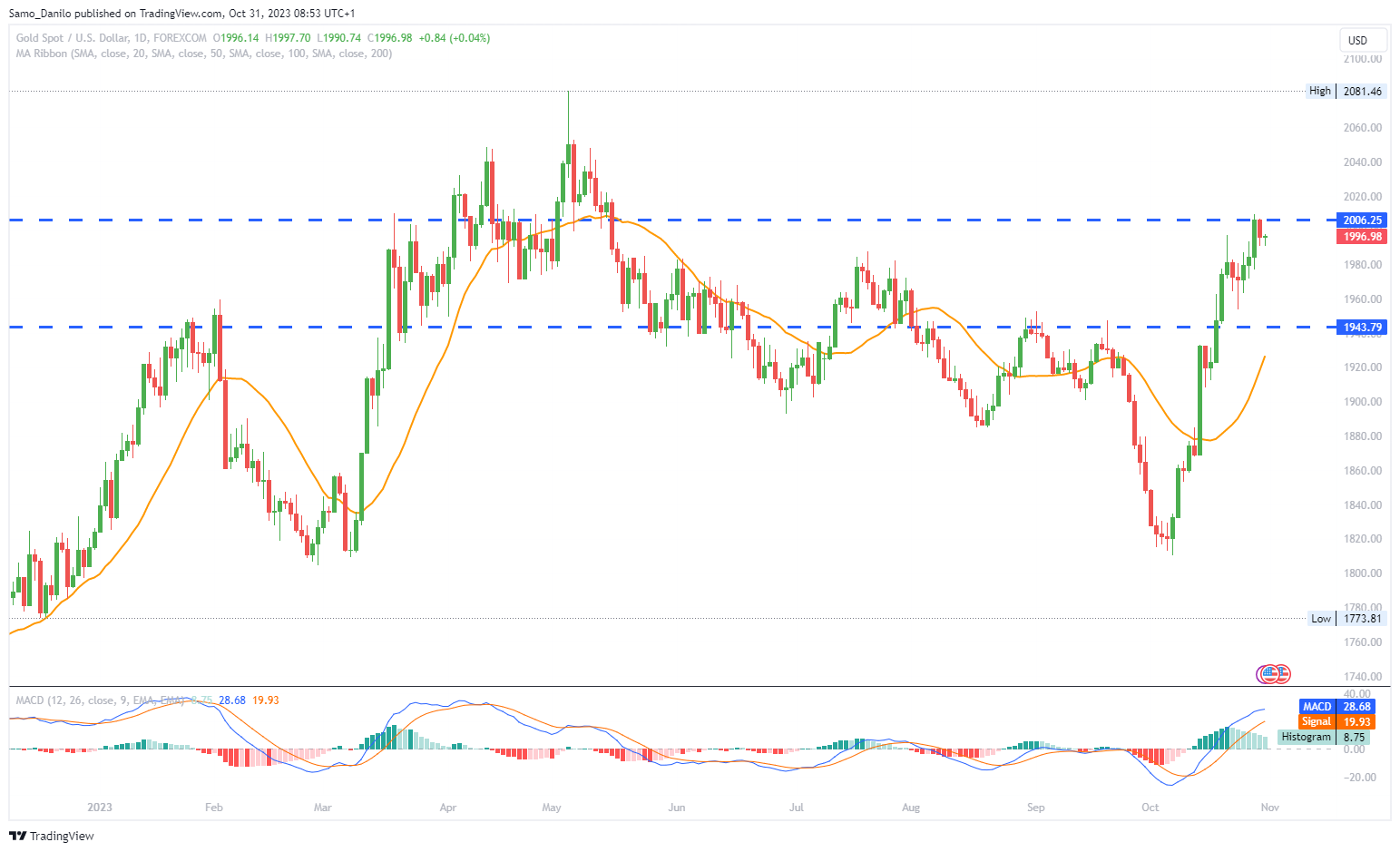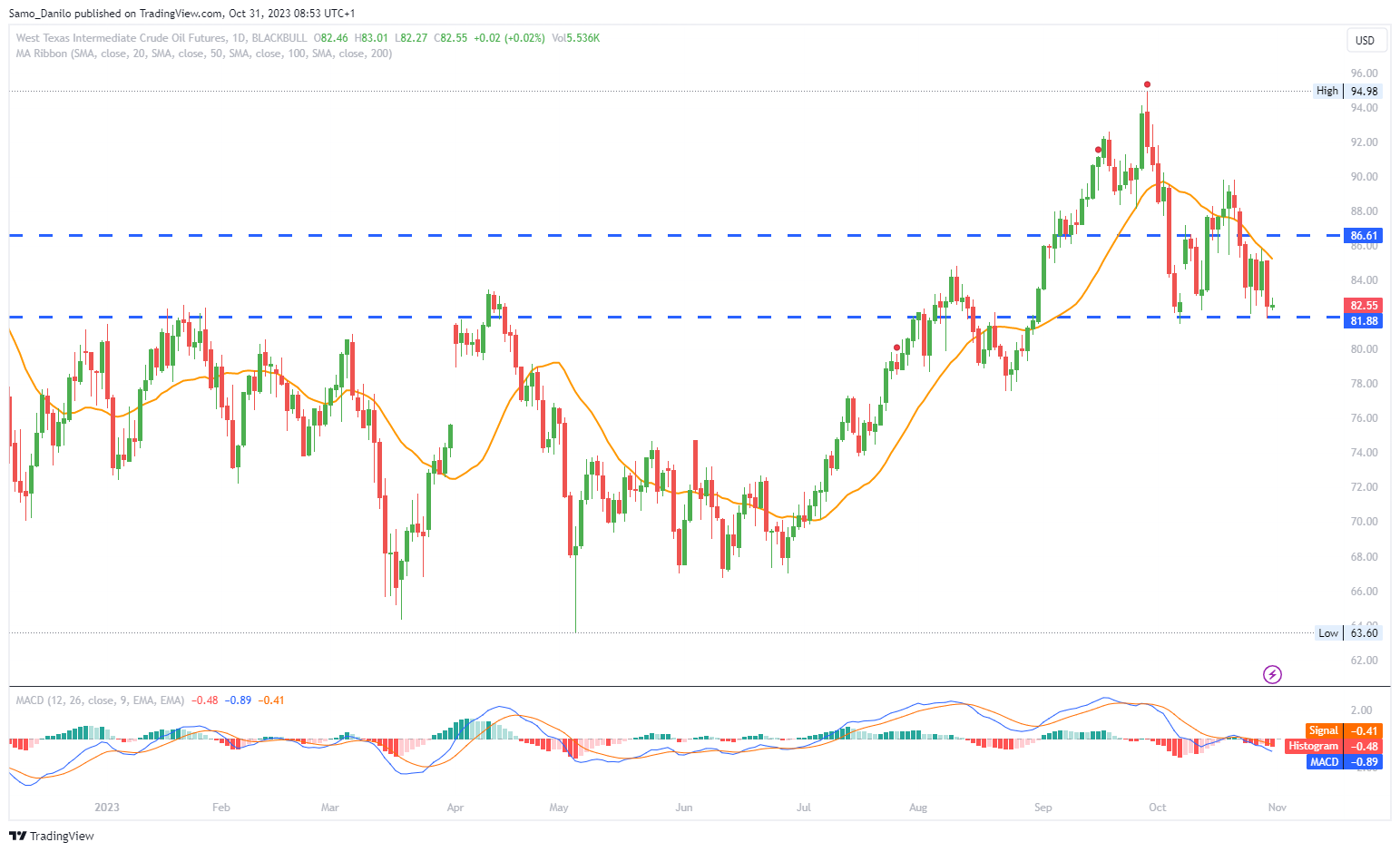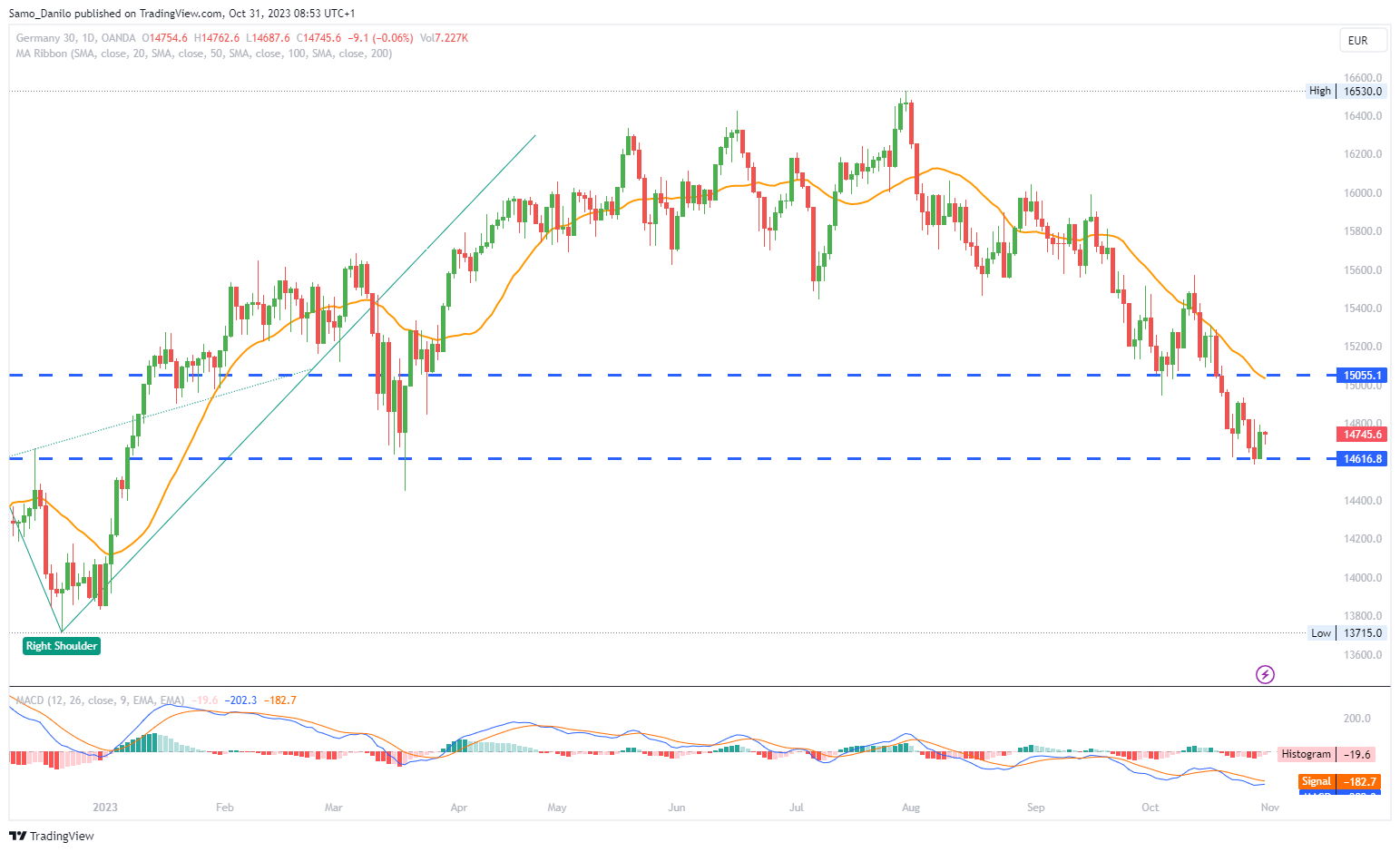EURUSD
- EUR/USD is currently trading below the 1.0600 level during the Asian session on Tuesday, signaling a decline after recent gains.
- The prevailing market expectation is that the US Federal Reserve will keep interest rates steady at 5.5% in the upcoming policy meeting. This expectation is anticipated to weaken the US Dollar (USD).
- The European Central Bank (ECB) is likely to react positively to the recent data from Germany. The economic contraction in Germany during the third quarter was milder than expected, with a quarter-on-quarter decline of 0.1% compared to the projected 0.3% contraction. This suggests a certain degree of economic resilience.
- Additional German data, particularly Retail Sales, is scheduled for release on Tuesday. Eurostat is also set to release the Eurozone Harmonized Index of Consumer Prices and GDP data.
- Traders are maintaining a cautious stance in anticipation of key Eurozone GDP and inflation data. The data is expected to reinforce the belief that the ECB will maintain its current monetary policy stance in the near future.
Closing statement: In summary, the EUR/USD is facing a decline after recent gains, partly due to the market's expectation of a steady Fed interest rate and the potential weakening of the USD. Germany's better-than-expected economic performance in the third quarter is seen as a positive factor that could influence ECB policy. Upcoming data releases, including Retail Sales, Eurozone inflation, and GDP data, are being closely watched by traders as they look for clues about the future stance of the ECB. Cautious sentiment prevails in the market.
GBPUSD
- GBP/USD is trading in the red zone near 1.2150 in early European trading on Tuesday, indicating a decline in the currency pair.
- The decline in GBP/USD is attributed to a broad-based recovery in the US Dollar (USD). This recovery is fueled by renewed concerns about China's economic growth, which have negatively impacted risk sentiment and driven investors toward the safety of the dollar.
- However, there appears to be a slight improvement in overall risk sentiment following developments on Monday, with the UK's FTSE 100 Index gaining more than 0.5% during the European session.
- Both the Federal Reserve (Fed) and the Bank of England (BoE) are scheduled to announce their respective monetary policy decisions later in the week. Investors might adopt a cautious stance ahead of these events, which could limit significant movements in GBP/USD.
- Throughout the week, important US economic data is set to be released. This includes the Employment Cost Index on Tuesday, the ADP private employment report, and the highly impactful Nonfarm Payrolls report on Friday. These figures will influence the momentum of the US Dollar. The USD weakened on Monday due to improved risk sentiment, but it remains relatively strong against other currencies.
| SMA (20) | Slightly Falling |
|
| RSI (14) | Slightly Falling |
|
| MACD (12, 26, 9) | Slightly Falling |
|
Closing statement: GBP/USD is facing a decline due to the US Dollar's resurgence driven by concerns over China's economic growth and a decline in risk sentiment. While risk sentiment improved slightly, key upcoming events, including monetary policy decisions by the Fed and BoE, are likely to keep traders cautious. Key US economic data releases will also impact the US Dollar's performance. Overall, the USD's strength is making it challenging for GBP/USD to gain significant traction, although a strengthening risk rally could potentially affect the USD's appeal.
GOLD
- Gold prices are taking a breather below the $2,000 mark early on Tuesday after experiencing a significant correction from near five-month highs on Monday.
- The market sentiment is turning negative due to concerns about economic growth after China's official business PMIs (Purchasing Managers' Indexes) raised worries about the state of the Chinese economy. This has contributed to a cautious stance among investors.
- Investors are exercising caution as they await earnings reports from the US tech sector and, more significantly, the upcoming Federal Reserve (Fed) interest rate decision.
- Ongoing geopolitical tensions in the Middle East are adding to market nervousness. As a result, investors are flocking to safety, and the US Dollar is in demand as a safe-haven currency.
- The Federal Reserve is set to announce its decision on Wednesday, with widespread expectations that it will maintain interest rates within the range of 5.25% to 5.50%. This range represents the highest interest rates in the past 22 years. Investors will closely watch the Fed's guidance on future rate hikes, as it will significantly influence the dynamics of the US Dollar, which in turn will impact the direction of gold prices.
| SMA (20) | Rising |
|
|
| RSI (14) | Rising |
|
|
| MACD (12, 26, 9) | Rising |
|
|
Closing statement:Gold prices are currently undergoing a correction after reaching recent highs. Market sentiment has turned negative due to concerns about China's economic growth, and investors are exercising caution ahead of important events, including US tech earnings and the Federal Reserve's interest rate decision. Ongoing geopolitical tensions in the Middle East are contributing to the safe-haven appeal of both the US Dollar and Gold. The outcome of the Fed's decision and its guidance on future interest rate hikes will play a crucial role in shaping the future direction of gold prices.
CRUDE OIL
- WTI, the US benchmark for crude oil, is currently trading around $82.80 as of Tuesday.
- According to a recent World Bank study, the escalating global tensions may further exacerbate the existing disruptions in the energy market, which have been caused by Russia's war in Ukraine.
- The World Bank is forecasting that global oil prices will average around $90 per barrel in the current quarter. However, they also highlight a "large disruption" scenario in which oil prices could surge from approximately $90 to a range between $140 and $157 per barrel.
- There are concerns that rising interest rates could exert downward pressure on WTI crude oil prices. While the Federal Reserve (Fed) is expected to keep interest rates steady, Fed Chair Jerome Powell mentioned that the decision for December would depend on incoming economic data.
- Oil traders will closely monitor the American Petroleum Institute (API) and the Energy Information Administration (EIA) weekly Crude Oil stock reports for the week ending on October 27, which are due on Wednesday. These reports often have a significant impact on oil prices.
| SMA (20) | Falling |
|
|
| RSI (14) | Neutral | ||
| MACD (12, 26, 9) | Slightly Falling |
|
Closing statement:WTI crude oil is currently trading around $82.80, and global tensions are a key driver of oil market disruptions. Oil prices are projected to average around $90 per barrel this quarter, but the potential for significant price spikes in a scenario of large disruptions is noted. Concerns about rising interest rates add another layer of uncertainty to oil markets. Upcoming API and EIA reports are expected to provide further insights into the state of crude oil inventories and may influence price movements.
DAX
- On Monday, German GDP and inflation figures provided a positive combination of economic data for the DAX. The German economy contracted by 0.1% in Q3, which was better than the expected contraction of 0.3%. Additionally, the annual inflation rate in Germany softened from 4.5% to 3.8% in October.
- However, German retail sales fell in September. Persistently high inflation rates appeared to have a negative impact on consumption in the largest eurozone economy. Retail sales unexpectedly declined by 0.8% in September compared to the previous month, and year-on-year, retail sales were down by 4.3%.
- Attention now shifts to the Eurozone as a whole. GDP figures for Q3 and October inflation data will be of particular interest to investors. These economic indicators often play a significant role in shaping market sentiment.
- The market-friendly numbers from Germany on Monday had a positive impact on the DAX. Similar trends in the broader Eurozone could support the investor appetite for DAX-listed stocks.
- While not explicitly mentioned in the provided text, it's important to note that the DAX is influenced by a range of factors, including global economic conditions, corporate earnings, and geopolitical developments. These factors can impact the performance of the DAX index.
| SMA (20) | Falling |
|
|
| RSI (14) | Slightly Rising |
| |
| MACD (12, 26, 9) | Slightly Falling |
|
Closing statement: In summary, favourable German GDP and inflation data, coupled with a focus on Eurozone economic indicators, have supported investor sentiment for DAX-listed stocks. The DAX's performance is influenced by various domestic and international factors.




